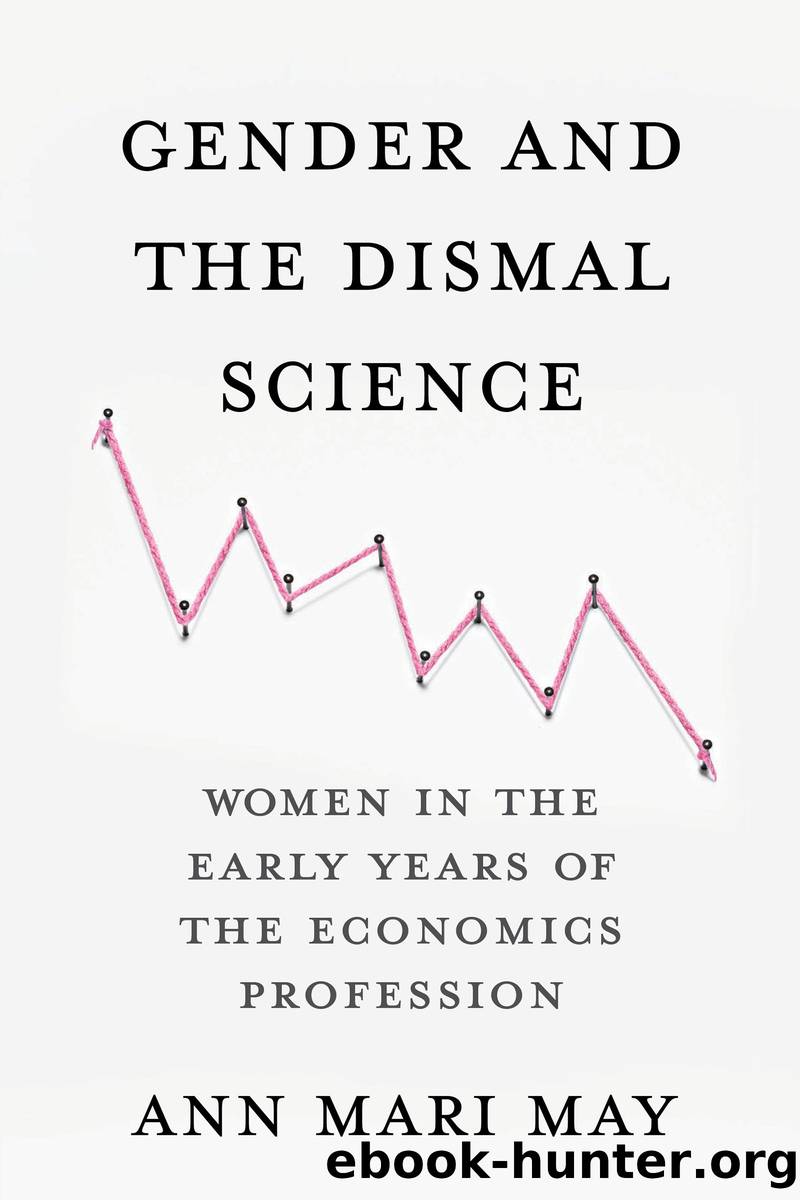Gender and the Dismal Science by Ann Mari May

Author:Ann Mari May
Language: eng
Format: epub
Publisher: Columbia University Press
GENDER AND THE JOURNAL ARTICLE IN PERSPECTIVE
Discussion of success in the academy often begins and ends with the notion that those with talent rise to the top. The cultural pull of a meritocratic mindset is well established in the United States, and nowhere more so than in the field of economics, where the virtues of a free market receive their fullest and most dispositive formal treatment.
It is a widely held belief that knowledge is advanced by sharing of research published in journal articles, reviewed by peers, and with the oversight of experts in the field as editors. In her discussion of publishing in science, Diane Crane talks about the presumptions and often unspoken norms underlying the review process and their importance for the advancement of knowledge.30
One linchpin of the review process is the notion that scientific achievements should be judged without reference to the scientistsâ personal or social characteristicsâincluding their position in the social structure of science. Crane points out that advances can be stifled if the academic stratification system inhibits some from performing scientific roles as a result of a personal or social characteristic. This kind of stratification is unfair to the individual scientist and can affect the diffusion of scientific ideas.31
Barbara F. Reskin and Denise D. Bielby explained that âsocial differentiationâ refers to the social processes that mark certain personal characteristics as important. Sex is indeed a âmaster status,â a social position that is a primary identifying characteristic of an individualâone that is central in organizing social and economic life.32
This reality is central in explaining women economistsâ role in the production of knowledge in the late nineteenth and early twentieth centuries. The reality facing these women economists was that their sex channeled them into entry-level positions that were different from those of men. They faced barriers in their selection of graduate training and had doors closed to them in terms of their choice of a professional home. This marginalization had profound implications for womenâs careers and their ability to participate in knowledge production. As Francine Blau, Marianne Ferber, and Anne Winkler put it, âOnce men and women are channeled into different types of entry jobs, the normal, everyday operation of the firmââbusiness as usualââwill virtually ensure sex differences in productivity, promotion opportunities, and pay.â33
Women scholars in the late nineteenth and early twentieth centuries were often drawn to the settlement house movement as one of the few outlets for educated women. Here they became strong proponents of social reform and exercised their voices in various studies and in government reports not subject to peer review or an editorâs interests. In contrast, male scholars took a divergent path, eschewing overt advocacy for seeming objectivity, preferring to concentrate on the new professional journal as a means of gaining professional authority and testimony as experts as a means of influencing policy.34
In this chapter we became aware of the subtle ways this overt marginalization works to shape what generally has come to be known as an old boyâs network. The reality of how
Download
This site does not store any files on its server. We only index and link to content provided by other sites. Please contact the content providers to delete copyright contents if any and email us, we'll remove relevant links or contents immediately.
Brotopia by Emily Chang(3026)
Nice Girls Don't Get the Corner Office by Lois P. Frankel(3021)
Lean In by Sheryl Sandberg(1544)
Resilience by Lisa Lisson(1423)
Lean In: Women, Work, and the Will to Lead by Sheryl Sandberg(1409)
Invested by Danielle Town(1385)
In the Darkroom by Susan Faludi(1348)
Unlocking Your Authentic Self: Overcoming Impostor Syndrome, Enhancing Self-confidence, and Banishing Self-doubt by Jennifer Hunt(1310)
I Shouldn't Be Telling You This: Success Secrets Every Gutsy Girl Should Know by Kate White(1282)
The Sense of an Ending by Julian Barnes(1242)
Women Who Work by Ivanka Trump(1226)
Brave, Not Perfect by Reshma Saujani(1205)
Girl, Stop Apologizing: A Shame-Free Plan for Embracing and Achieving Your Goals by Rachel Hollis(1195)
Sun Tzu's Art of War for Women by Catherine Huang(1190)
Boss Bitch by Nicole Lapin(1188)
Girl Decoded by Rana el Kaliouby & Carol Colman(1136)
Woman to Woman by Kim Chamberlain(1128)
Fifty Million Rising by Saadia Zahidi(1126)
Estate Sales Made Easy by Victoria Gray(1101)
